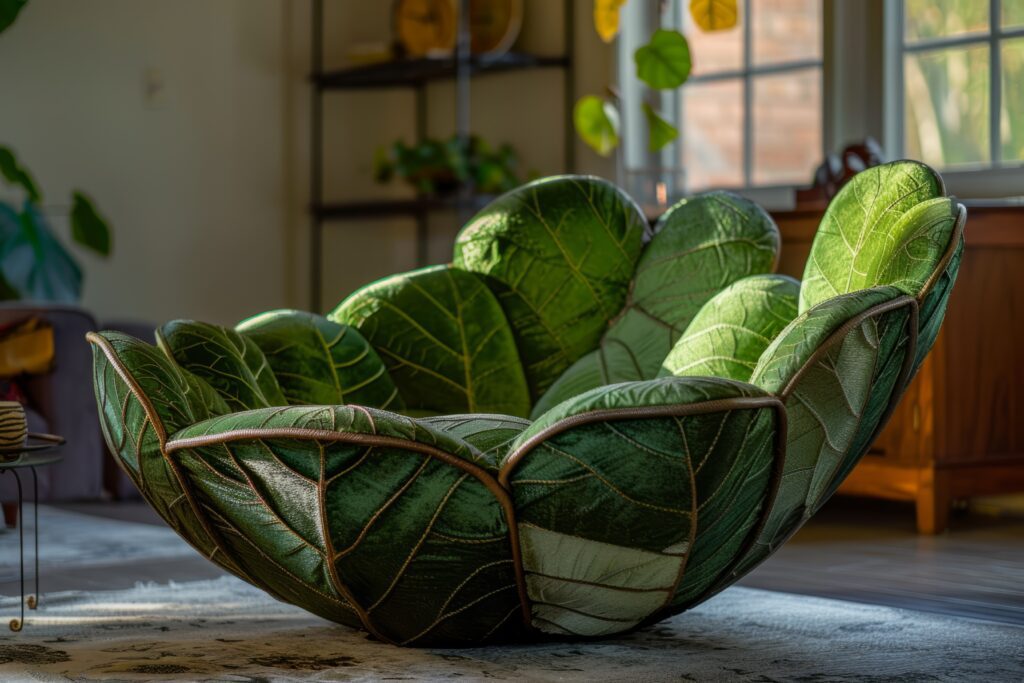
Designing an eco-friendly living space has become a priority for homeowners looking to reduce their environmental footprint. Incorporating sustainable materials, energy-efficient lighting, and natural elements creates a space that is both stylish and environmentally responsible. Here are some essential tips and ideas to bring sustainability into your interior design, complete with high-performance keywords like Eco-Friendly Interior Design Ideas, Sustainable Living Decor, and Smart Home Technology for Eco-Friendly Living.
1. Choose Sustainable Materials for Interiors
Selecting Sustainable Materials for Interiors is a key aspect of eco-friendly design. Materials like bamboo, cork, and reclaimed wood are not only renewable but also add a warm, natural aesthetic to any space. Bamboo grows rapidly and is ideal for flooring and furniture, while cork provides natural insulation and soundproofing. For a unique and sustainable touch, consider recycled materials, such as glass tiles or reclaimed metal. These choices reduce waste and environmental impact without compromising on style.
2. Opt for Energy-Efficient Lighting Solutions
Energy-Efficient Lighting Solutions are essential for reducing energy consumption and enhancing the ambiance of a room. LED and CFL bulbs, for instance, consume less energy than traditional incandescent bulbs and last longer, saving both energy and costs over time. Maximizing natural light is another great way to reduce energy usage. Large windows, strategically placed mirrors, and light-colored walls help reflect sunlight, illuminating your home and cutting down on the need for artificial lighting.
3. Incorporate Low-Impact Paints and Finishes
Using Low-Impact Paints and Finishes is vital for maintaining a healthy indoor environment. Traditional paints often contain volatile organic compounds (VOCs) that release harmful chemicals, impacting both air quality and health. Low-VOC or VOC-free paints offer an eco-friendly alternative. Additionally, consider natural finishes, like beeswax or linseed oil, for wood surfaces. These not only enhance the wood’s durability but also reduce toxic off-gassing, making your home healthier and more sustainable.
4. Invest in Sustainable Furniture Choices
Furniture production can have a significant environmental impact due to the resources and energy required. By opting for Sustainable Furniture Choices, such as pieces made from responsibly sourced wood, bamboo, or recycled materials, you contribute to eco-friendly living. Furniture certified by the Forest Stewardship Council (FSC) ensures that the wood used is harvested responsibly. Upcycling or purchasing second-hand furniture is also a fantastic way to reduce demand for new manufacturing while adding character to your space.
5. Introduce Indoor Plants for Air Quality
Indoor plants are a beautiful addition to any room and are a natural way to improve Indoor Plants for Air Quality. Plants like snake plants, spider plants, and peace lilies help filter out toxins, providing a healthier indoor environment. Additionally, indoor plants add color and life to your home, enhancing both its visual appeal and sustainability. By bringing a bit of nature indoors, you not only elevate the space but also enjoy the mental health benefits associated with greenery.
6. Integrate Smart Home Technology for Eco-Friendly Living
Integrating Smart Home Technology for Eco-Friendly Living can significantly reduce your home’s environmental footprint. Smart thermostats, lighting controls, and water-saving devices allow you to manage energy and water usage efficiently. For instance, a smart thermostat learns your heating and cooling preferences, adjusting them automatically to reduce energy consumption. Smart lighting systems allow you to control lights remotely, ensuring they’re only on when needed. These technologies optimize resource use and make eco-friendly living more convenient.
7. Create Green Home Design with Eco-Friendly Decor
Green Home Design isn’t just about materials; it’s about the overall look and feel of the space. Opt for decor items made from natural fibers like organic cotton, hemp, or linen, which are biodegradable and often more sustainable than synthetic fabrics. For rugs, jute or sisal provides a natural, durable option that’s renewable. Consider locally sourced and fair-trade decor to reduce transportation emissions and support sustainable practices. This thoughtful approach to decorating helps create a Sustainable Living Decor environment that is stylish and mindful of the planet.
8. Embrace Solar and Renewable Energy Sources
Incorporating renewable energy sources, such as solar panels, is an impactful way to support Eco-Friendly Interior Design Ideas. Although solar panels require an upfront investment, they provide long-term savings on energy bills and reduce dependency on fossil fuels. Solar energy is one of the most sustainable choices, offering a self-sustaining power source that complements your green home design.
By following these sustainable interior design tips, you can create a home that not only meets your aesthetic goals but also aligns with eco-friendly principles. A green home is not only beautiful and comfortable; it’s a step towards a more sustainable future. For more inspiration on sustainable interior design, visit lavishlayerinteriors.com.
